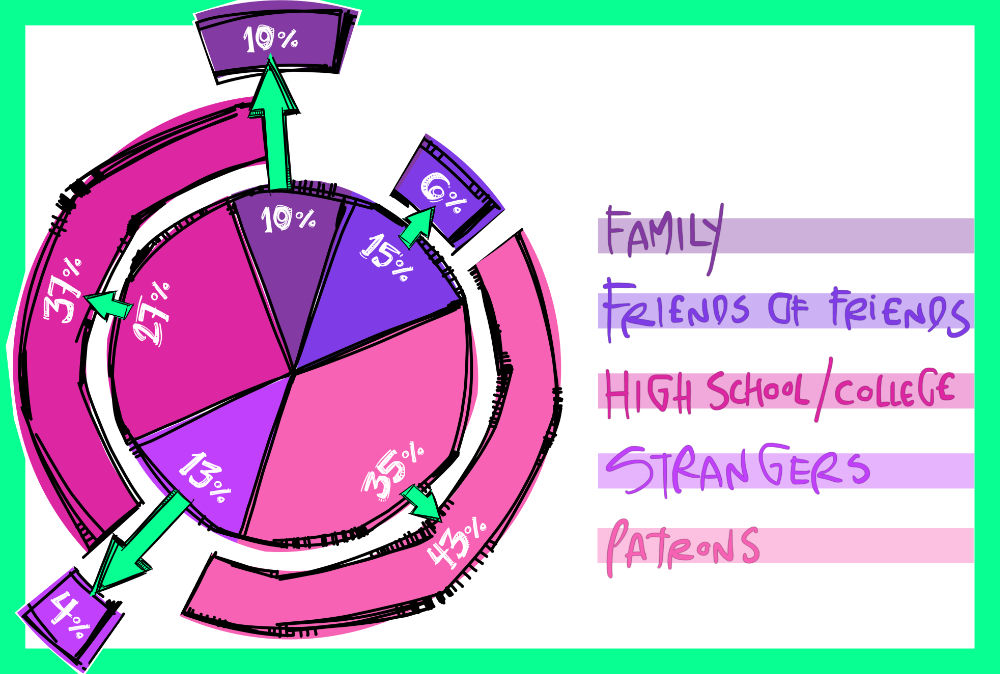Blog / 2019 / What I Learned Running a Kickstarter Campaign
September 23, 2019
$11731
That’s the money I made on Kickstarter this month to create an animal alphabet book. After processing fees and taxes as well as printing and shipping costs are accounted for, this translates to around $10 per hour of work on the project, and that is T H R I L L I N G.
I know, I know: it seems weird for a professional to be doing a happy dance about making that kind of money, but the truth is that’s way more than I usually make. (Can we have an artists’ union already?) What’s more, it is guaranteed pay, which is precious for artists since we do most of our work on spec. The security that this project’s 77 backers have just gifted to me is priceless.
If you are looking for this kind of support for your next project, here are a few things I learned in my month of fundraising:
People are shocked when you ask for thousands of dollars.
A number of friends expressed concern over my original goal of $9000, asking why I couldn’t just make the project without getting funding first or why I wouldn’t just get a job doing illustrations for someone else. (Oh yes, I have that friend too.) Their feedback held a certain weight, especially in light of the fact that the last time I ran a Kickstarter I asked for a lot less money. Ultimately, the pushback prompted me to publish an explanation for the $9000 and a raw exploration of my “why” for this book—two very vulnerable shares which I would not have made otherwise and which contributed to the success of the campaign.
My advice: make your goal 50% higher than you think you can easily achieve and be ready to show your math.
Some people don’t understand how valuable a $5 donation is.
If you’re an independent artist and I know you and you ask me to support a project, I will happily give you $5. I do this because $5 is substantial in my modest budget and because I know that the act of contributing to your dream is significant, even if the amount is humble.
That said, I have found that sometimes people with more financial security are embarrassed to give so little, and, because of that, they end up not contributing at all. So far, the only way I’ve come up with to combat this mindset is by offering a physical gift in exchange for a small pledge. In the case of my Kickstarter, I added a $10 sticker tier to encourage all levels of contribution.
Forget the notion that real artists don’t need support from their friends and family.
Here’s the breakdown of how I know the 77 backers and how much of the $11731 they contributed.

- 10% are family.
My maman and mother-in-law along with six sweet cousins gave me 10% of the funds.
- 15% are friends of friends who became backers because of our mutual friend.
These fantastic referrals netted me 6% of the funds.
- 27% are high school and college friends, some of whom I hadn’t spoken to in years.
These longtime lovelies gave me 37% of the funds.
- 13% are people I don’t know who appear to have found my project through the internet.
These wonderful strangers provided 4% of the funds.
- 35% are people I met through my art.
These champions and cheerleaders gave me 43% of the funds.
In other words, if I remove people related to me and people who knew me as a teenager, I only make half as much money for this Kickstarter. Of course, most of the 35% of backers that I met through my art are my friends now. If our relationship disqualifies my patrons, then I’m left with 20 supporters and 1k of funding.
More importantly, I am certain that if I did a breakdown of my Patreon supporters and of people who buy my art, books, or services, the percentages would be similar. Can we please put to bed the idea that, if you’re a real artist, you shouldn’t need your loved ones’ help? No art has EVER been made without family and friends to support it.
Promoting the same project intensely for 30 days is difficult but also fun!
When I was forced to get the ABC book out of my head and communicate about it to others, my understanding of it grew. It’s like when you’re talking with a friend about a problem and suddenly you hear yourself name the only plausible solution. It was in you all along, but you needed to speak it out loud to someone who cared enough to listen before you could comprehend it. This is just one of the reasons why I believe that good art is more about communication than self-expression, and it’s also why I love art marketing.
UPDATE
June 24, 2020
Baby Sees ABCs is out and available here! You can see all the illustrations from the book in this online gallery.
Did this post make you think of something you want to share with me? I’d love to hear from you!
To receive an email every time I publish a new article or video, sign up for my special mailing list.

